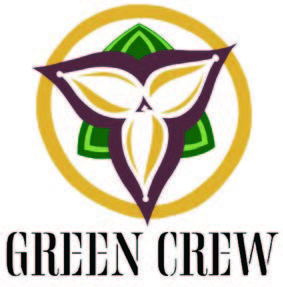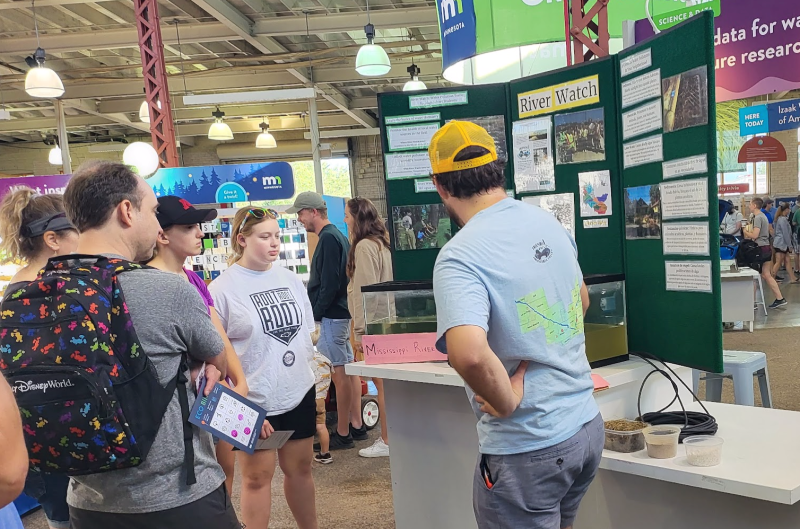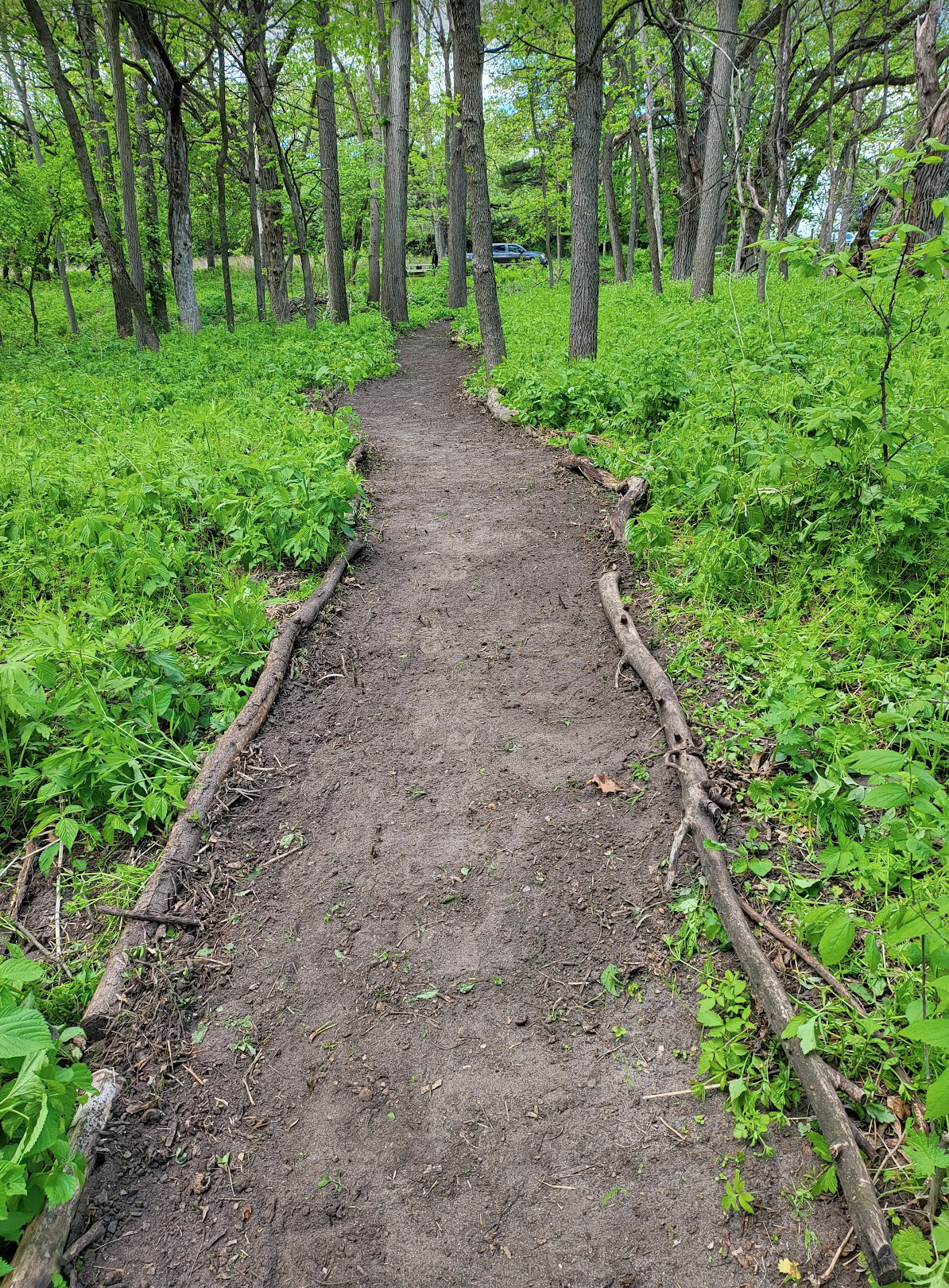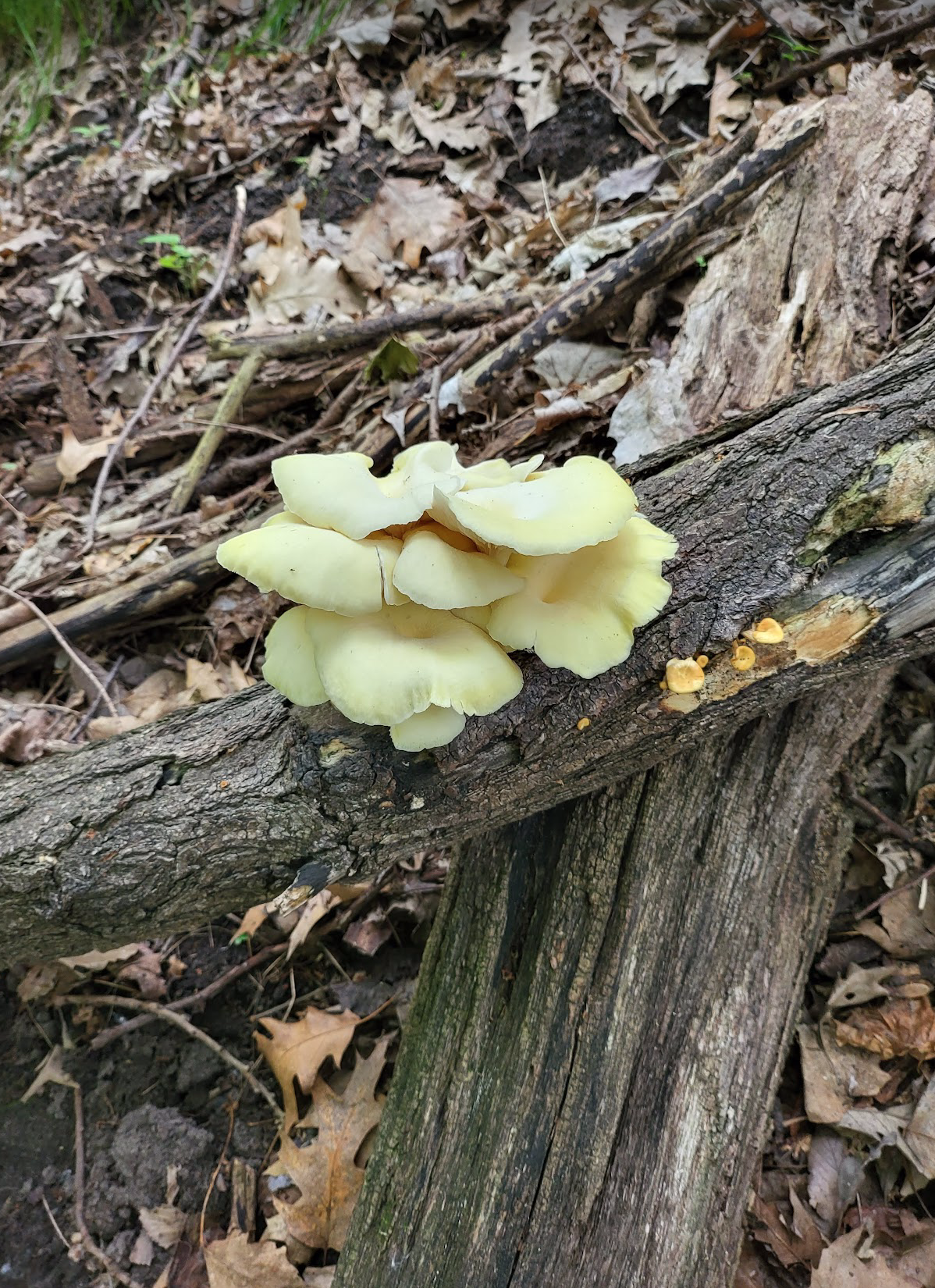After logging the hottest summer for the sixth consecutive year, 2022 was historic for global warming and climate change discourse alike.
Like the rising temperatures, climate is a hot topic. For the 27th United Nations Climate Summit (the 27th Conference of Parties, COP27), politicians from countries spanning five continents gathered in Egypt to discuss initiatives to develop a path toward
a more sustainable environment for all. Still, COP27 only represents a small percentage of the world population experiencing “eco-anxiety.”
And while the adults deliberated in Egypt, a group of teenagers in Minnesota formed a club called Green Crew to help address an array of environmental issues.
Green Crew is the youth program of the Minnesota Valley Chapter of the Izaak Walton League and a Venturing crew of the Boy Scouts of America (BSA).
By design, the Green Crew asserts a new power dynamic where the youth are in charge. Borrowing from the BSA model, the Crew is powered by the will of the youth participants while the adults provide support. It is a service-based organization, and the
service projects are designed to be ongoing, science-based initiatives.
Organized for volunteer science
 The Crew is powered by the will of the youth participants while the adults provide support.
The Crew is powered by the will of the youth participants while the adults provide support.
At its first organizational meeting, the Green Crew elected youth officials including a president, secretary and treasurer and most importantly, the members appointed a chief science officer to serve in a key leadership position. Next, an executive team
was formed with six positions and a variety of support roles.
The chief science officer and adjoining science team members review all projects to ensure that each incorporates the most effective practices and uses proven scientific methods. That team also builds in a continual evaluation of their hypothesis to ensure
improvement. Many of the projects are part of citizen science projects and collaborate with local scientists.
Coming together with training
Before any projects could be organized, the Crew had to earn the qualifications in order to determine the methodology of the organization. In its early months, all youth and adult members were given the opportunity to undergo an optional but helpful Leave
No Trace training, which focuses on ethical interaction in nature. In short, “leave the outdoors as you found it” is the guiding principle. The training was an intensive immersion over one weekend on the seven principles of Leave No Trace.
“I really enjoyed that we were learning how to apply those seven principles to our everyday lives, not just when we’re out on the trail camping,” Green Crew member Griffith Pugh remembers. The lessons ranged from safe fire preparation
to respecting visitors and wildlife.
Together, we learned each principle and then each person arranged and demonstrated a mock-lesson for the entire group.
Camille Morton, our Green Crew president, recalls how “the training set the foundation for the Crew and gave us all an idea of what we should accomplish through this organization.” The Leave No Trace training established core values in addition
to providing the perfect bonding opportunity for the founding members.
“Before, we were just high schoolers from different walks of life, and then we became a real team,” says Grace Fikke. For a brand-new Crew, the training was an essential experience for development and close connections.
How to Start a Green Crew
Our adult and youth leaders are committed to developing a network of Green Crews working together all across the country. We are developing a set of tools and resources to support this effort.
Start the Conversation
Start sharing this article and the Green Crew website with potential members, advisors, and partners. Explore the level of interest in making a commitment to launch a Crew.
Complete the Initial Assessment
The Green Crew team has developed an assessment for evaluating the “readiness” of a particular location to launch a Green Crew. We have ranked the assets which we believe are needed to be successful in launching a Green Crew.
Review the Assessment with Green Crew Leadership
Our team will review the results of the assessment with you and develop a roadmap that will make sense in your community.
Develop the Leadership Team
Based on the road map, a leadership team needs to be organized which includes youth, members from the chapter, and critical partners.
Customize a Launch Plan
Under the guidance of the Green Crew, a launch plan will be customized from our templates. It will build on the local assets and connect with national resources.
Secure Youth and Adult Training
Green Crew will provide in-depth onsite training for all new associated Crews.
Launch
We can’t wait to get you up and running with a solid youth-led program that is part of the Green Crew network. It all starts with an email and video conference with the executive director of youth programming at the Minnesota Valley Chapter
of the Green Crew.
By Joseph Barisonzi
Getting right to work: Invasive species
A high school freshman at The Blake School, Hannah Barisonzi, is one of the Green Crew founders. Barisonzi spent six months designing a program to reduce the harm of invasive plants like buckthorn and garlic mustard. She spent months coordinating with
the BSA and the board at the League’s Minnesota Valley Chapter to develop the project. The goal is to restore a healthy ecosystem of native Minnesota plants and animals.
Barisonzi also works with the Minnesota Invasive Terrestrial Plants and Pests Center on a field study of American elm trees that have been bred to have a natural resistance to Dutch elm disease. This spring, 50 trees from five different sample groups,
including a control group, will be planted on Chapter property, in addition to participation from neighboring property owners.
“American elm trees were an important part of the native forests, and should play an important part in urban forests,” she says. “This project is one small but important step to reintroducing them to the ecosystem.”
 The Crew tables at community events like the Minnesota State Fair.
The Crew tables at community events like the Minnesota State Fair.Tree Equity
The Tree Equity project is a major initiative started by Suryash Rawat, another founding member of Green Crew. Tree equity, which has captured growing attention, aims to restore low-income urban areas with native and climate-resilient trees.
The most important thing about the Tree Equity project is the fact that it acknowledges that caring about the environment also involves caring about other people.Sophie Herron
In urban areas, trees help to provide cooler temperatures and better air quality as well as beauty and quality of life. But unfortunately, many lower-income urban neighborhoods lack the abundance of trees needed to provide those benefits. Rawat explains,
“We need to have plants and sustainable native trees that are really good for the environment and really, really good for the city.”
Crew member Sophie Herron adds, “In my opinion, the most important thing about the Tree Equity project is the fact that it acknowledges that caring about the environment also involves caringabout other people.” Rawat and Herron are an unstoppable
duo and a vital asset to the club.
In the spring of 2023, all members and volunteers will unite and plant 50 trees in Landfall, a manufactured home community. Landfall lost its urban tree coverage due to the emerald ash borer infestation that has impacted native species across the Midwest.
The Green Crew is raising funds to take down the dead and dangerous trees and then buy and plant new, resilient native trees. Rawat notes, “We want those trees to stay there and be able to withstand the weather and all the conditions that the
city is going to put on them.”
Tom Yuska serves as the equally devoted adult advisor for the tree project and is especially excited to mentor young leaders. “It’s a passing of the baton of knowledge and experience from caring adults to eager youth.” Yuska says the
Green Crew helps to smartly prepare them “to most effectively and proactively mitigate the dire consequences of climate change that have been forced upon them and will really affect their lives and their futures.”
Following the Tree Equity launch in 2023, Green Crew is looking to increase the number of trees planted each spring, expand into more native plant species and, in the process, increase the biodiversity within these communities.
River Walk project
Grace Fikke, the Green Crew’s current chief science officer, directs the River Walk project alongside Sophia Peterson. Both attend The Blake School and are part of the founding team. The River Walk is orchestrated to use the latest technology to
monitor the water quality of the nearby wetlands and floodplains that flow into the Minnesota River.
River Walk activities include taking samples directly from the Minnesota River to record the pH balance and check for toxic pollutants. This project is highly interactive and is especially popular among elementary and middle school volunteers.
Tom Crawford is the adult advisor for Grace Fikke and cheerfully states, “I am most proud of the River Walk program’s ability to get community members out in the Minnesota River Valley to investigate and appreciate the complexity and the importance
of the Minnesota River floodplain.”
The River Walk provides the opportunity for all to participate in a real lab experiment and provoke curiosity about science in a real-world setting. Ron Asher, employee at The Blake School and a frequent volunteer in the River Walk, emphasizes, “The
real value of that experience for our students and also for our teachers, was how our day at the river connected to our work in the classroom.”
Partners with elementary school
The Green Crew has reached out and developed partnerships with local environmental organizations, government agencies and schools. Last summer the Green Crew hosted students going into fifth and sixth grade from a summer program at The Blake School.
The campers came out to the Crew House once a week for “Green Camp.” In the mornings, the Green Crew youth volunteers led a nature walk, a Leave No Trace exercise and a water quality sampling hike through the nature reserve to the Minnesota
River. In the afternoon, the campers assisted the youth leaders in conservation service projects. This coming summer, the Green Crew is partnering with three additional summer school programs for a total of four days a week.
Land Restoration project
The Land Restoration project, or also referred to as ReWilding, ties in with the strategies of the Invasive Species Removal and Tree Restoration projects that are used to improve native habitats in Minnesota.
 To create an avenue for outdoor education, the Green Crew built a trail through the Minnesota Valley Chapter property.
To create an avenue for outdoor education, the Green Crew built a trail through the Minnesota Valley Chapter property.
Essentially, land restoration involves developing a specific “rewilding” plan for the ecologically sensitive property, including erosion prevention, invasive species removal and native habitat restoration.
Joshua Berger and Griffith Pugh are two high school juniors who have stepped up to organize the project and coordinate with experts in the metro area. The two are part of the executive leadership cabinet: Joshua Berger is treasurer at Green Crew and Griffith
Pugh is the vice president of programming. Berger explains, “By learning how to take care of the land, we learn lessons about how to take care of the earth.”
In fact, one major act of land restoration was completed in the spring of 2022 with the creation of the Nicolette Trail along the property of the Minnesota Valley Izaak Walton League Chapter House. Nicolette Johnson, a leader of both Green Crew and Scouts/BSA,
recognized the plot of land as a potential site for outdoor learning. “The space at the Chapter House is beautiful and rich with wildlife, so I wanted people to be able to engage with nature,” she said.
The Nicolette Trail was the first successful public project since the launch of Green Crew and attracted community members from all walks of life. After the trail was completed, Johnson was able to earn her Summit Award, the highest honor in the BSA Venturing
Program.
Fungus Diversity project
 The fungus project aims to shed light on these fascinating but often misunderstood organisms.
The fungus project aims to shed light on these fascinating but often misunderstood organisms.
The Fungus Diversity project was started by college freshman Wayatt Dayoff as part of a national citizen science study documenting fungal diversity. The project explores the positive and negative roles of fungi in ecosystems and provides useful information
about these widely misunderstood organisms. Joshua Berger and Griffith Pugh participate in the Fungus Diversity project alongside Dayoff.
“I’m totally blown away by this fungus project that we have kind of ongoing for the next 10 years,” says Pugh. “I didn’t even know we could do this. We’re looking at how fungus growth on our chapter property is affected
by climate change.”
Observation is a key component within the process of this project and employs every step of the scientific method, Berger reiterates. “I think the fungus project is a great example about how we have a science-based approach to conservation, and
we don’t do what we do based upon what we initially think, but rather what science tells us.”
Pollinator Habitat project
The Pollinator Habitat is the newest project for the members of Green Crew and involves growing native plants to support the populations of pollinators. Unlike past initiatives, this project is a joint effort among neighborhoods. The purpose is to encourage
homeowners to consider adding native plants to their landscaping. Ava Elie, a founding member of Green Crew, is passionate about supporting endangered pollinators such as bees. “I want to help because pollinators are so important to the ecosystem:
they help spread diversity among plants and increase seed production in plants.” Elie and a small crew of volunteers will start by planting a model pollinator garden at the Minnesota Valley Chapter House and then begin educating the surrounding
neighborhoods. The ultimate goal is to maintain the pollinator gardens on our property, coordinate a pollinator plant sale and launch a service to support neighbors’ conversions from turf grass to native pollinator-friendly yards. The team will
welcome Katie Christianson, an Eagle Scout, to assist the Pollinator Habitat project this coming spring.
Green Crew is all about connecting to the environment and building up the confidence to tackle climate change. The future of environmental activism is dependent on youth participation to set the foundation of sustainability for generations to come. Since
joining Green Crew, I have met hundreds of youth who share the same passion and together, we are making progress in the community.
An Innovative Model for League Chapters
The Green Crew is committed to launching Venturing crews across the United States with the knowledge that there are youth and adults who would like to roll up their sleeves and make a real difference. In November, the official blog of the Boy Scouts
of America featured the story of the launch of the Green Crew and its close connection to Scouting.
All of the youth and the new adult advisors of the Green Crew are automatically members of the Minnesota Valley Chapter of the Izaak Walton League and have gotten involved directly in Chapter business, activities and programs.
In the fall of 2022, two of the Green Crew youth members – Camille Morton and Suryash Rawat – were elected to the Chapter Board. Camille is co-leading the effort to establish a Division Youth Defender Award and is coordinating a May art
show at the Koubla Gallery in the Crew House. Suryash Rawat leads the Chapter’s Stewardship Committee, establishing policies and procedures to make our Chapter House a model of sustainable living. He helped to coordinate an educational event
with U.S. Senator Tina Smith on the homeowner rebates available from purchasing solar panels as an energy source for houses.
The Green Crew model, along with the tools and systems, has developed and will support League chapters to be successful. From the legal agreements, technology infrastructure, templates and programs, the Green Crew was designed to seed other crews.
Building and establishing a partnership between a League chapter and the local Scout council is an important part of the success for the Green Crew. Equally important is oversight within the Izaak Walton League chapter. Griffith Pugh believes
that “The future of the Green Crew is expanding into many different Venturing crews regionally and nationally.”
The Green Crew will support incoming Venturing crews by aiding in the design and development of new programs with the end result being a national chain of climate-conscious communities. Essentially, the goal of each Green Crew is to provide a secure
platform to unite and support youth activists. The president of Green Crew, Camille Morton, hopes that “Green Crew would be a new horizon for each generation of youth and become accessible in every state.”
Joseph Barisonzi is volunteer executive director of youth programming for the Minnesota Valley Chapter of the Izaak Walton League of America. He is the point of contact for Chapters interested in launching their own Green Crew. Web address for Green
Crew: www.GreenCrew.club. Personal email: joseph@iwlamnvalley.org
Top photo: Green Crew youth leaders and adult advisors gather for first day of Leave No Trace training. Credit: Green Crew.